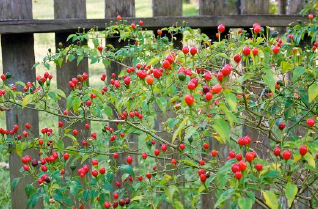By Urban Harvest

There has been much discontent this winter; as if cold, rainy, dismal days are not supposed to define the season. However, human nature being what it is, there is that sense of longing for what we do not have at the moment. I admit to falling prey to such thinking.
Spring's virtues
Yes, the virtues of spring are extolled by poets and composers and in religions and cultures around the world. Perhaps in a historical sense, rejoicing that humans survived harsh winters at all is reason to celebrate. What also holds true at the end of a long winter is at least for a short time, we embrace an appreciation for days that align with our own internal temperature.
Would composer Vivaldi's Spring lighten and refresh our mood as well were it not for the foreboding, anxious-sounding notes of his Winter?
Even now, my Redbud trees bear their delicate, distinctive, lavender-pink blooms heralding the arrival of spring. Perhaps these pastels are nature's way of easing our senses into the soon to follow hot, unforgiving rays of a Texas sun.
Were one to examine my garden color palette over the years, softer, delicate spring-like colors would dominate - pinks, purples, pale yellows, white and lavender. Rarely would shades of scarlet creep in and never orange ones.
Still, with the memory of bone-chilling days fresh in my mind, I am finding the allure of warmer, even hot colors - red, orange, tangerine, deep yellow - too irresistible.
When I reach inside my closet, I am drawn most often to red, gold, or orange clothing, not the colors on the cooler side of the color wheel.
Perhaps it is time to dress my own garden border of perennials and annuals in similar hues. With many of my hardiest plants still in doubt of being resurrected thanks to several below-freezing winter days, I may have several empty spaces in which to incorporate bolder-colored specimens. The larger challenge will be which ones to choose.
Native plants
Because I have a fondness for any plant that offers habitat value for wildlife, I know many native plants will make the list. It is thought birds, in general, are attracted to red flowers.
Profuse, star-shaped, scarlet flowers and glossy green foliage adorn the Texas Star hibiscus. Preferring a sunny location, this cold-tolerant perennial has a shrub-like appearance and can reach 6 feet during one growing season.
Use it to create a strong vertical element toward the back of the garden or create a visual statement by grouping several together by themselves. Cut back the stalks in early spring and wait for the blooms to arrive on new growth. Hummingbirds will be awaiting the show as well.
Pineapple sage is named for the scent released when its leaves are rubbed or crushed. It can be planted in early spring along with other perennials or added to an herb garden. Bright green foliage accentuates the red, tubular flowers that appear in late summer or early fall on erect stems and that attract butterflies and hummingbirds, two excellent pollinators. If you are not aware, bees are not the only ones.
A sure way to heat up the garden is by including a few ornamental red peppers along with your perennials. Although too hot for my taste, these edible peppers make a striking display with their habit of holding their fruit above the foliage. Chili pequin, a favorite of Thomas Jefferson, has small, intensely hot red peppers when fully mature and moreover is prized by wildlife.
Wildlife attractors
Another perennial that entices hummingbirds to pay you a visit is Flame Acanthus with its orange-red tubular flowers. Root hardy, it can be cut back in late winter to promote spring growth and an abundance of blooms. As it grows, it has a spreading habit that should fill some of those empty spaces.
Although my Mexican milkweed may well return from seeds released from ripened pods last fall, adding several plants with their orange-yellow flowers will offer Monarch Butterfly caterpillars their first feast. Watch closely as the female adult butterfly floats effortlessly from plant to plant depositing the tiny eggs on the underside of milkweed leaves.
Perhaps the lilt of a butterfly's shadow is just what I need to bring on the warmth.
This column is produced by Urban Harvest. Learn about gardening classes, community gardens and orchards, farmers markets and more at Urban Harvest website. Article is written by Chris LaChance who is director of education for Urban Harvest. Contact her at chris@urbanharvest.org or 713-880-5540.